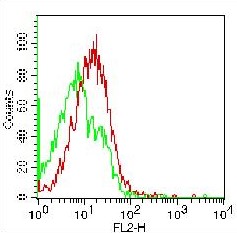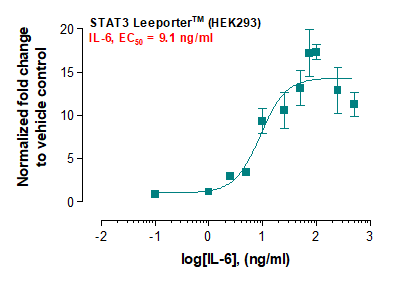Human STAT1 / p91 Recombinant Protein (His & GST Tag)(Discontinued)
Shipping Info:
For estimated delivery dates, please contact us at [email protected]
| Amount : | 100 µg |
| Purification : | > 92 % as determined by SDS-PAGE |
| Content : | Formulation Lyophilized from sterile 20mM Tris, 500mM NaCl, pH 7.4 Normally 5 % - 8 % trehalose, mannitol and 0.01% Tween80 are added as protectants before lyophilization. |
| Storage condition : | Store it under sterile conditions at -20°C to -80°C. It is recommended that the protein be aliquoted for optimal storage. Avoid repeated freeze-thaw cycles. |
| AA sequence : | Met1-Val712 |
| Alternative Name : | CANDF7 Protein, IMD31A Protein, IMD31B Protein, IMD31C Protein, ISGF-3 Protein, STAT91 Protein, |
Source : Baculovirus-Insect Cells
STAT1 is a member of the STAT protein family. In response to cytokines and growth factors, STAT family members are phosphorylated by the receptor associated kinases, and then form homo- or heterodimers that translocate to the cell nucleus where they act as transcription activators. STAT1 can be activated by various ligands, including interferon-alpha, interferon-gamma, EGF, PDGF and IL6. It is a signal transducer and transcription activator that mediates cellular responses to interferons (IFNs), cytokine KITLG/SCF and other cytokines and growth factors. The phosphorylated STATs dimerize, associate with ISGF3G/IRF-9 to form a complex termed ISGF3 transcription factor, that enters the nucleus. ISGF3 binds to the IFN stimulated response element (ISRE) to activate the transcription of interferon stimulated genes, which drive the cell in an antiviral state. In response to type II IFN (IFN-gamma), STAT1 is tyrosine- and serine-phosphorylated. It then forms a homodimer termed IFN-gamma-activated factor (GAF), migrates into the nucleus and binds to the IFN gamma activated sequence (GAS) to drive the expression of the target genes, inducing a cellular antiviral state. STAT1 becomes activated in response to KITLG/SCF and KIT signaling and may mediate cellular responses to activated FGFR1, FGFR2, FGFR3 and FGFR4. Defects in STAT1 can cause STAT1 deficiency complete and familial candidiasis type 7.
STAT1 is a member of the STAT protein family. In response to cytokines and growth factors, STAT family members are phosphorylated by the receptor associated kinases, and then form homo- or heterodimers that translocate to the cell nucleus where they act as transcription activators. STAT1 can be activated by various ligands, including interferon-alpha, interferon-gamma, EGF, PDGF and IL6. It is a signal transducer and transcription activator that mediates cellular responses to interferons (IFNs), cytokine KITLG/SCF and other cytokines and growth factors. The phosphorylated STATs dimerize, associate with ISGF3G/IRF-9 to form a complex termed ISGF3 transcription factor, that enters the nucleus. ISGF3 binds to the IFN stimulated response element (ISRE) to activate the transcription of interferon stimulated genes, which drive the cell in an antiviral state. In response to type II IFN (IFN-gamma), STAT1 is tyrosine- and serine-phosphorylated. It then forms a homodimer termed IFN-gamma-activated factor (GAF), migrates into the nucleus and binds to the IFN gamma activated sequence (GAS) to drive the expression of the target genes, inducing a cellular antiviral state. STAT1 becomes activated in response to KITLG/SCF and KIT signaling and may mediate cellular responses to activated FGFR1, FGFR2, FGFR3 and FGFR4. Defects in STAT1 can cause STAT1 deficiency complete and familial candidiasis type 7.
Endotoxin :< 1.0 EU per µg of the protein as determined by the LAL method
For Research Use Only. Not for use in diagnostic/therapeutics procedures.
|
There are currently no product reviews
|





















.png)













